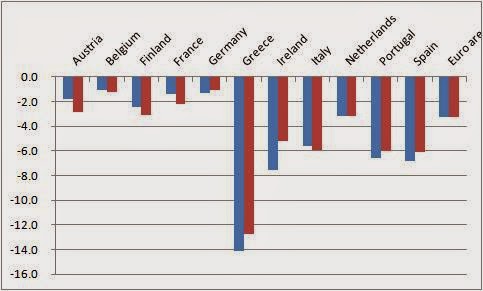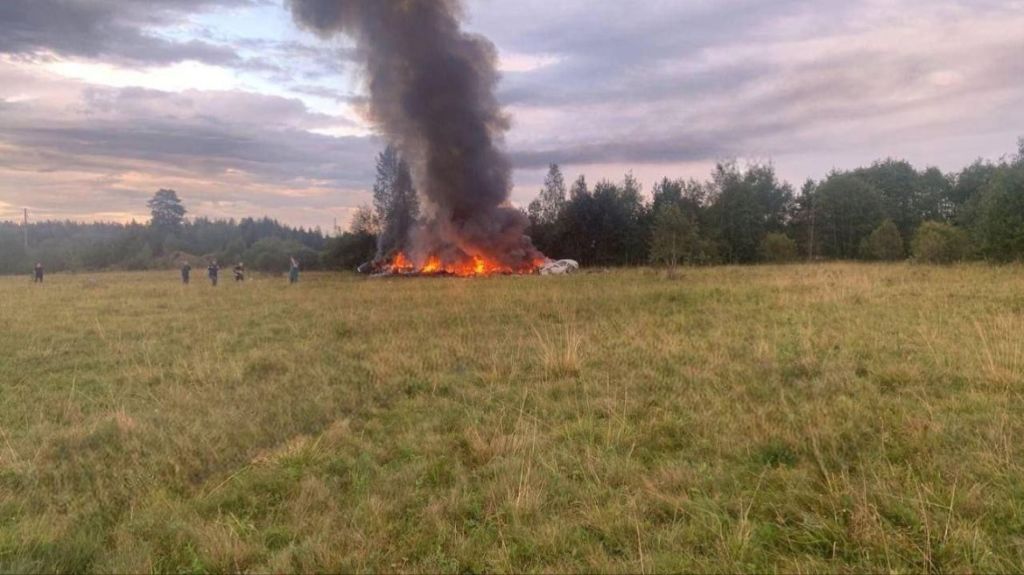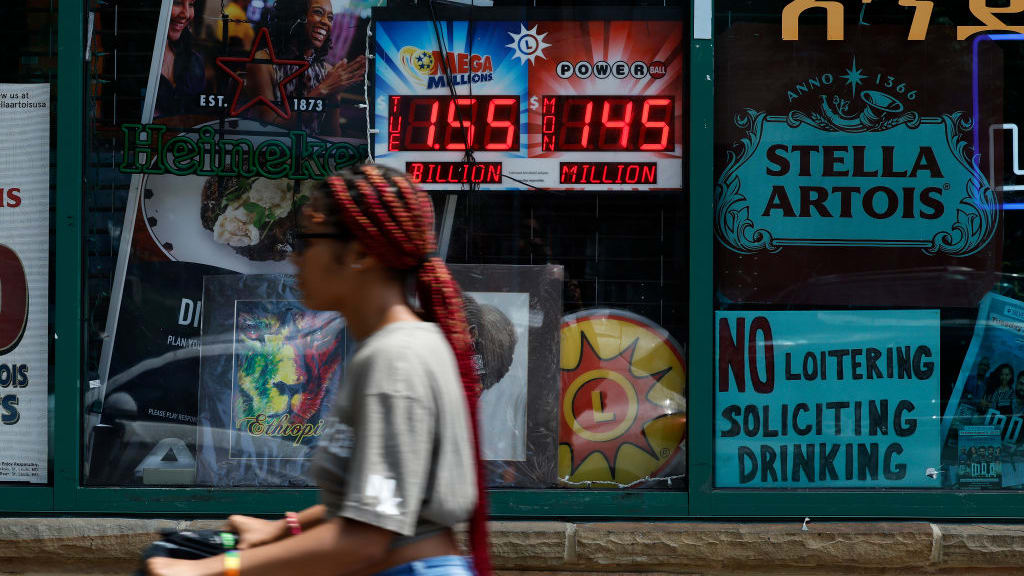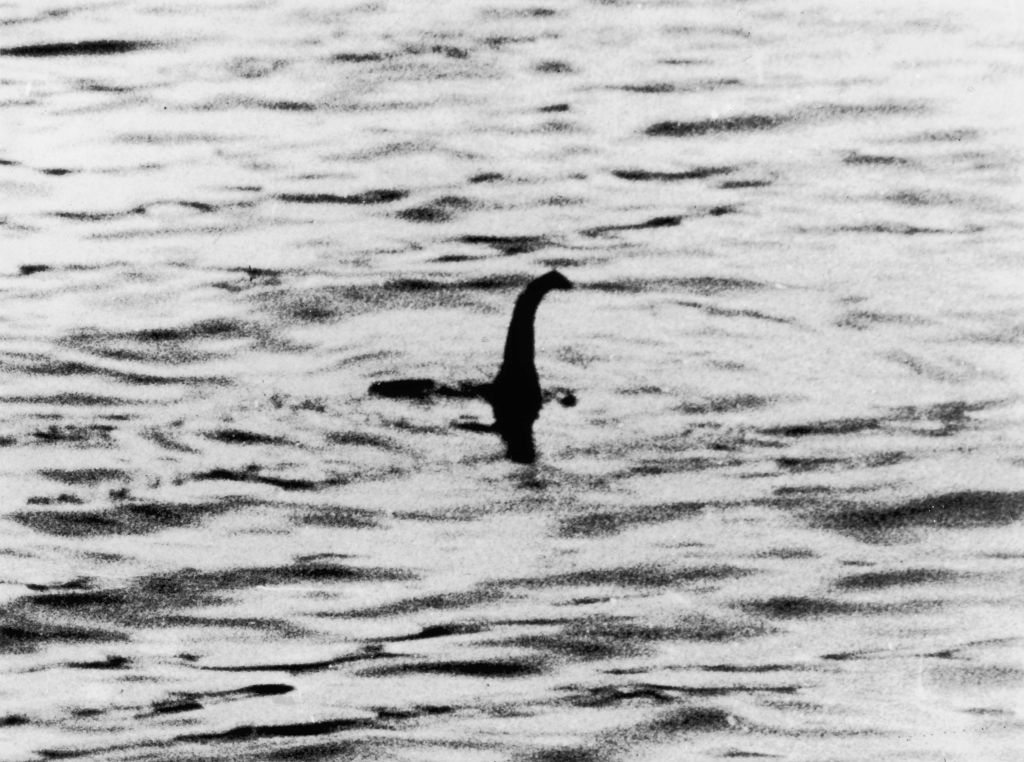The eurozone is lighting at least $300 billion on fire annually


The eurozone depression is now officially worse than the Great Depression of the 1930s. What does that mean in concrete terms? One way of looking at it, courtesy of the British economist Simon Wren-Lewis, is in terms of the output gap. That's how much economic activity could be happening, but isn't, due to austerity and hard money. Here's a chart Wren-Lewis made, looking at the situation by country:

Most people have heard that Greece and Spain are in dire straits. But even places like France, the Netherlands, and Austria are suffering a significant output gap. Heck, even Germany is down about 1 percent.
The overall output gap across the eurozone is calculated here as about 3 percent. Let's be conservative and say that 2 percent is closer to the true number. According to the IMF, the adjusted GDP of the Eurozone is $16.8 trillion. Two percent of that, rounding down, is $300 billion.
The Week
Escape your echo chamber. Get the facts behind the news, plus analysis from multiple perspectives.

Sign up for The Week's Free Newsletters
From our morning news briefing to a weekly Good News Newsletter, get the best of The Week delivered directly to your inbox.
From our morning news briefing to a weekly Good News Newsletter, get the best of The Week delivered directly to your inbox.
So the Eurozone isn't actually lighting more than $300 billion on fire – it's worse than that. The output gap represents jobs, goods, and services literally canceled out of existence for no reason. At least if you piled up $300 billion and torched it, you could keep people warm for a few minutes.
A free daily email with the biggest news stories of the day – and the best features from TheWeek.com
Ryan Cooper is a national correspondent at TheWeek.com. His work has appeared in the Washington Monthly, The New Republic, and the Washington Post.
-
 Why it’s important to shop around for a mortgage and what to look for
Why it’s important to shop around for a mortgage and what to look forThe Explainer You can save big by comparing different mortgage offers
-
 4 ways to save on rising health care costs
4 ways to save on rising health care costsThe Explainer Health care expenses are part of an overall increase in the cost of living for Americans
-
 How to financially prepare for divorce
How to financially prepare for divorceThe Explainer Facing ‘irreconcilable differences’ does not have to be financially devastating
-
 Nobody seems surprised Wagner's Prigozhin died under suspicious circumstances
Nobody seems surprised Wagner's Prigozhin died under suspicious circumstancesSpeed Read
-
 Western mountain climbers allegedly left Pakistani porter to die on K2
Western mountain climbers allegedly left Pakistani porter to die on K2Speed Read
-
 'Circular saw blades' divide controversial Rio Grande buoys installed by Texas governor
'Circular saw blades' divide controversial Rio Grande buoys installed by Texas governorSpeed Read
-
 Los Angeles city workers stage 1-day walkout over labor conditions
Los Angeles city workers stage 1-day walkout over labor conditionsSpeed Read
-
 Mega Millions jackpot climbs to an estimated $1.55 billion
Mega Millions jackpot climbs to an estimated $1.55 billionSpeed Read
-
 Bangladesh dealing with worst dengue fever outbreak on record
Bangladesh dealing with worst dengue fever outbreak on recordSpeed Read
-
 Glacial outburst flooding in Juneau destroys homes
Glacial outburst flooding in Juneau destroys homesSpeed Read
-
 Scotland seeking 'monster hunters' to search for fabled Loch Ness creature
Scotland seeking 'monster hunters' to search for fabled Loch Ness creatureSpeed Read
